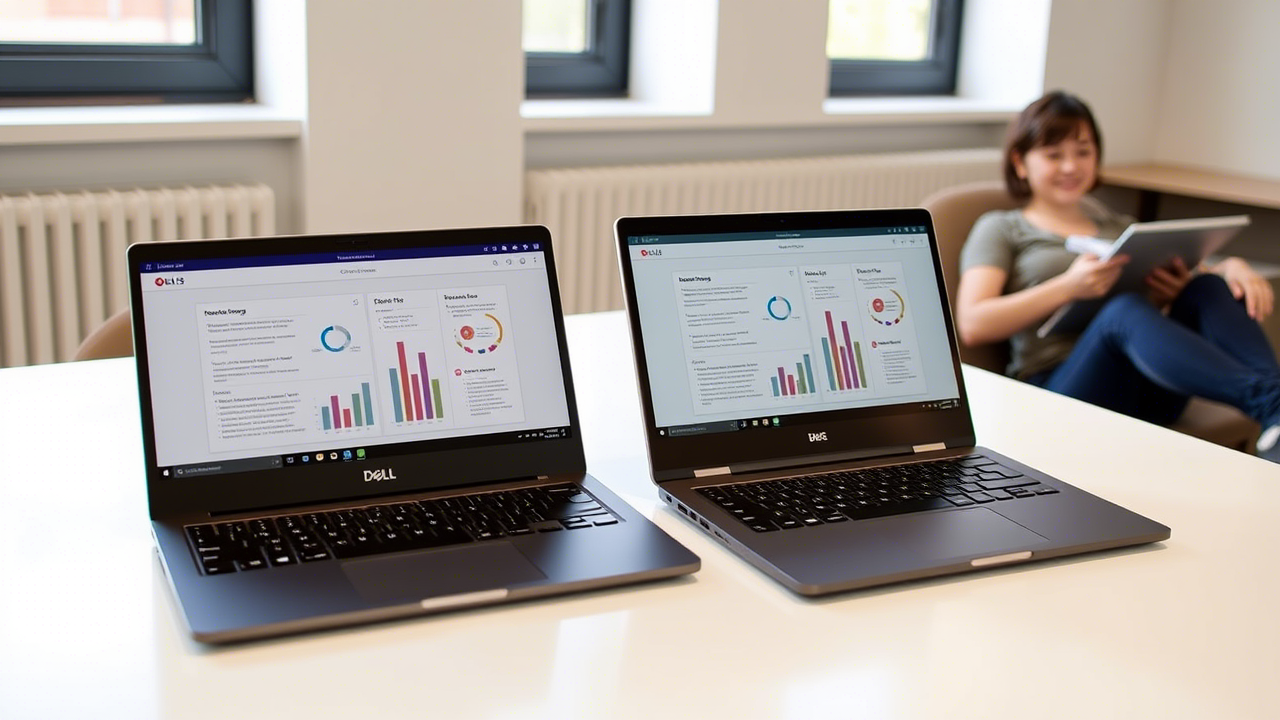Dell XPS 13 vs. HP Spectre x360: A Gentle Comparison of Two Premium Laptops
Dell XPS 13 vs. HP Spectre x360: A Gentle Comparison of Two Premium Laptops
When it comes to choosing a premium 13-inch laptop, the Dell XPS 13 and HP Spectre x360 often rise to the top of the conversation. Both are beautifully crafted machines, designed for those who value performance, portability, and a touch of elegance in their tech. If you’re pondering which one might suit you best, let’s take a calm stroll through their features, differences, and strengths—no rush, just a moment to breathe and reflect.

Design: Subtle Elegance Meets Versatile Charm
The Dell XPS 13 has a minimalist, understated appeal. Its sleek aluminum chassis, often in a silver finish with a carbon fiber or woven glass palm rest, feels both modern and timeless. It’s a clamshell laptop, built to be lightweight—typically around 2.6 to 2.8 pounds—and impressively thin, making it a breeze to slip into a bag. The tiny bezels around its display give it a refined, edge-to-edge look that’s easy on the eyes.
On the other hand, the HP Spectre x360 brings a bit more personality to the table. With its gem-cut edges and options like Nightfall Black or Nocturne Blue with gold accents, it’s a laptop that doesn’t mind standing out. As a 2-in-1 convertible, its 360-degree hinge lets you flip it into tablet or tent mode, adding a layer of versatility the XPS 13 doesn’t offer in its standard form. It’s slightly heavier, hovering just over 3 pounds, but still feels portable and well-balanced.
Both designs are premium in their own right—one understated, the other adaptable. It’s really about what vibe resonates with you.
Display: Crisp and Vibrant Choices
Screens matter, and both laptops deliver here. The Dell XPS 13 typically features a 13.4-inch display with a 16:10 aspect ratio, offering a bit more vertical space for work or browsing. You can choose from Full HD+ (1920×1200) up to a stunning 4K UHD+ (3840×2400), with an OLED option in some models for deep blacks and vivid colors. It’s bright, sharp, and perfect for everything from spreadsheets to streaming.
The HP Spectre x360 counters with a 13.5-inch display in a taller 3:2 aspect ratio, which feels even more spacious for productivity. It starts at Full HD+ (1920×1280) and can go up to a 3K2K (3000×2000) OLED panel. The OLED version is a standout, with rich contrast and colors that pop, plus touch support across all configurations—ideal if you enjoy sketching or navigating with your fingers. The XPS offers touch as an upgrade, but it’s not standard.
Whether you lean toward the XPS’s slightly smaller, sharper screen or the Spectre’s taller, touch-ready canvas, both are delightful to look at.
Performance: Power in Quiet Packages
Under the hood, these laptops keep pace with modern demands. The XPS 13 often uses Intel’s latest Core processors—think 12th or 13th Gen, or even the new Core Ultra series in 2025 models. Configurations vary, but you might see a Core i5 or i7, paired with 8GB to 32GB of RAM and SSDs from 256GB to 2TB. It’s efficient and capable, handling everyday tasks with ease and even tackling light creative work.
The Spectre x360 follows a similar path, also leveraging Intel’s latest chips, like the Core Ultra 5 or 7 in newer models. It matches the XPS in RAM and storage options, often starting with 16GB and 512GB as a base, and can stretch to 32GB and 2TB. Its 2-in-1 design doesn’t compromise power, and it’s just as smooth for multitasking or casual use. The Spectre’s larger battery—around 66Wh compared to the XPS’s 55Wh—might give it a slight edge in longevity, though real-world results depend on your screen choice and usage.
Both are quiet performers, built for those who need reliability without fuss.
Keyboard and Ports: Comfort and Connectivity
Typing on the XPS 13 is a pleasure, with its edge-to-edge keyboard offering large, responsive keys. Some newer models feature a zero-lattice design and haptic touchpad, which might take a moment to get used to but feels futuristic and precise. Ports are minimal—two Thunderbolt 4 USB-C ports and a headphone jack—keeping it sleek but requiring a dongle for older devices.
The Spectre x360’s keyboard is equally inviting, with a traditional layout, generous spacing, and a snappy feel. Its haptic touchpad is smooth and reliable, and as a bonus, it supports an active pen for drawing or notes. Connectivity shines here: you get two Thunderbolt 4 ports, a USB-A port, a headphone jack, and a microSD slot. It’s a thoughtful nod to practicality in a world of USB-C dominance.
If you value port variety, the Spectre has a gentle advantage; if simplicity is your preference, the XPS holds its own.
Which One Feels Right for You?
Choosing between the Dell XPS 13 and HP Spectre x360 isn’t about finding a winner—it’s about finding your fit. The XPS 13 is a lightweight, no-nonsense companion, perfect for those who love a clean, clamshell design and don’t need tablet functionality. It’s a quiet achiever, blending portability with power.
The Spectre x360, meanwhile, offers flexibility. Its 2-in-1 nature, richer port selection, and slightly larger display make it a versatile pick for creatives, note-takers, or anyone who enjoys switching modes. It’s a bit more expressive, a touch more accommodating.
Take a moment to think about what you need. If you crave simplicity and featherlight travel, the XPS 13 might be your calm oasis. If you want a device that adapts to your day—laptop one minute, tablet the next—the Spectre x360 could be your gentle muse. Either way, you’re in good hands with these two.